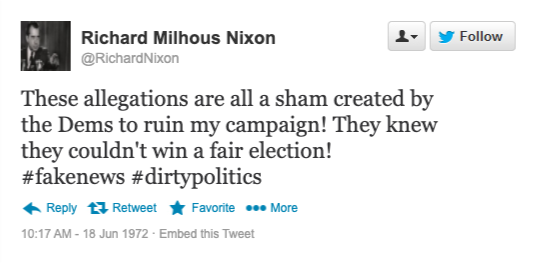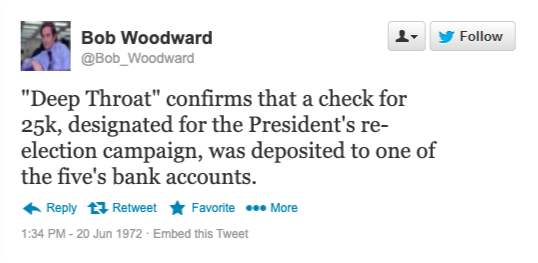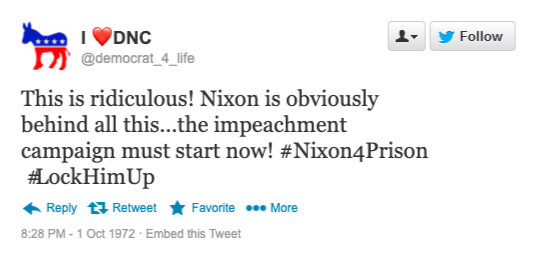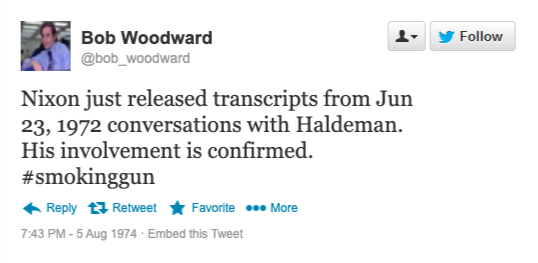On June 17, 1972, five men, found with rolls of tape, bugging equipment, and thousands of dollars in cash, were arrested after breaking into the Democratic National Committee Headquarters. The five men were members of the Committee to Re-Elect The President, aka CREEP, which led to a series of controversies about President Nixon’s connection to/knowledge of the operation. The arrest set off a series of controversy, national headlines, and cover-ups that came to be known as the Watergate Scandal. This scandal occurred pre-social media and had social media been around in the 1970s, public debate. The case was covered by two young reporters, Bob Woodward and Carl Bernstein, from the Washington Post, however, in a world with social media outlets like Facebook, Twitter, and Instagram, the public perception would have been greatly altered. Social media acts as a detractor from our rational sense by rewarding emotional actions with functions such as the like button. As Hossein Derakhshan described in How Social Media Endangers Knowledge, “Enlightenment’s motto of ‘Dare to know’ has become ‘Dare not to care to know'” (Wired). As the Watergate controversy worked its way out here is what it may have looked like over Twitter.






While the tweets shown here were curated by yours truly, they still get the message across that social media platforms, like Twitter, elicit emotional behavior. I tried to craft the tweets, especially the ones from President Nixon, to illustrate the unfiltered nature we see in today’s presidency. In light of all this, how do you think the Trump presidency would be different if we were in a pre-social media world.